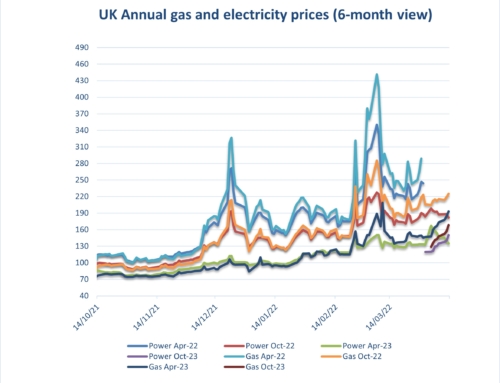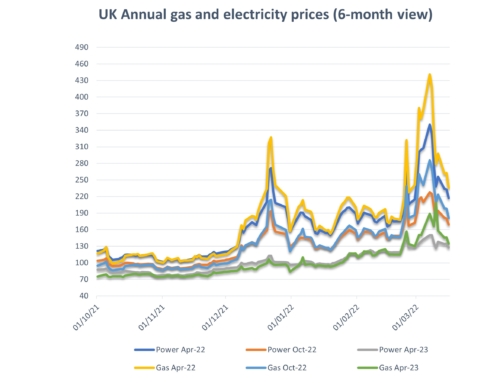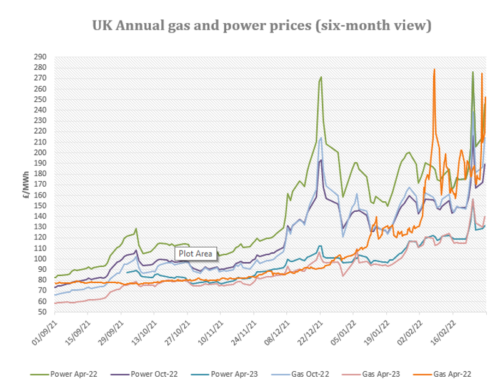Energy costs: Energy prices have been fluctuating over the last 2 weeks which has affected both short term and long term pricing. Short term pricing has had consistency on wind generation to begin with but this recently dropped significantly and has since pushed prices up alongside unscheduled outages. Long term pricing has jumped from rallying oil prices, Norwegian industrial strikes and hurricanes in the US forcing closure of oil and gas fields. Volatility is expected to remain high as concerns over countries going into lockdown reducing global demand and concerns on the economy alongside the build up to US elections and Brexit discussions.
Upside:
Delayed Repairs – Hammerfest gas plant in Norway is to remain shut until the end of while damage assessments and repairs are carried out following the fire that took place last month.
Oil markets – Oil markets have rallied up following oil facilities being closed, Donald Trump’s speedy recovery, falling inventory levels and oil output cuts among OPEC nations.
LNG – LNG facility in Australia is closed until next year and if outages continue this will push LNG prices as well as Asian winter buying demand increasing.
Weather – Conditions will remain unsettled over the next couple of weeks with high amount of wind and rain with temperatures predicted to drop further as we get further into Winter.
Wind output – UK Government has raised its 2030 target for offshore wind capacity by a third (quadruple current levels).
Delayed Interconnector – The IFA 2 interconnector between France and UK has been delayed until next month and if there are any further delays, this will tighten the supply outlook. Another interconnector between France and UK has also been delayed until mid-2022.
Downside:
Gas storage – European gas storage has remained stable at 95% fullness.
EUAs – These prices have slipped by 7.5% over the last fortnight, partly on concerns about the impact of a no-deal Brexit.
Could Go Either Way:
Sterling – Brexit negotiations are ongoing and predictions of a no-deal. Any problems in this area will feed through to exchange rates and impact energy prices.
Lockdown – If further lockdowns in the UK and globally are announced, it will intensify economic fears but would reduce energy demand. Global energy demand may not recover until 2025.
Non-energy costs:
On the electricity side organisations will see further increases in pass through costs from both government and industry infrastructure providers in the coming months as the Targeted Charging Review (TCR) is added to the other distribution, transmission, Electricity Market Reform (EMR), Capacity Market, Energy Intensive Industries (EII) charges already in place.
Climate change levy (CCL) again changed on April 1st. Your CCA related CCL exemption rates changed at the same time (Gas to 81%, Electricity to 92%). Please ensure your PP11 forms are updated and sent through.
Is your organisation covered by the new Streamlined Energy and Carbon Reporting (SECR) scheme?
Designed to replace in part the Carbon Reduction Commitment (CRC) which ends this year and to follow on from the energy savings recommendations generated by ESOS compliance. Note, SECR will cover a wider scope of organisations than CRC and ESOS do. Full details are attached below.
SECR will require all large enterprises to disclose within their annual financial filing obligations to Companies House, their greenhouse gas emissions, energy usage (from gas, electricity and transportation as a minimum), energy efficiency actions and progress against at least one intensity ratio.
The scheme came into effect on April 1st, 2019 and will be required to be included in the first set of accounts published for financial years starting after this date.
The scheme covers publicly quoted companies (extending their current disclosure requirements) and UK incorporated companies or LLPs with two or more of the following.
- More than 250 employees
- A turnover in excess of £36 million
- A balance sheet in excess of £18 million.
UK subsidiaries, who meet the eligibility criteria, but are covered by a parent group’s report (unless the parent group is registered outside the UK) and companies using less than 40,000 kWh of energy during the reporting year do not have to provide disclosure. Note the reporting year should be aligned to your financial year.
Are you eligible for an EII rebate?
Under current rules, if you qualify at an industry sector level and your business passes the 20% electricity intensity test you may qualify for exemption to CFD and RO charges. Please see the attached Government RO/CFD guidance document and update and give Abby a call on the main number to discuss this further.
A copy of our detailed market report is available: Eneco Market Information mid October 2020
Gas and electricity prices from 2009 to date are available here: Eneco Gas and Electricity Pricing Trends Sept 2009 to mid Oct 2020
A copy of our environmental charges and Climate Change Levy rates from 2012 to date: Environmental Pass Through Charges and CCL ppkWh Updated 21.07.20
A copy of RO/CFD guidance document: RO_CFD_Guidance_Revised_July_2018
SECR: SECR EA Guidelines
TCR Charges (Targeted Charging Review): TCR Charges (Targeted Charging Review)




